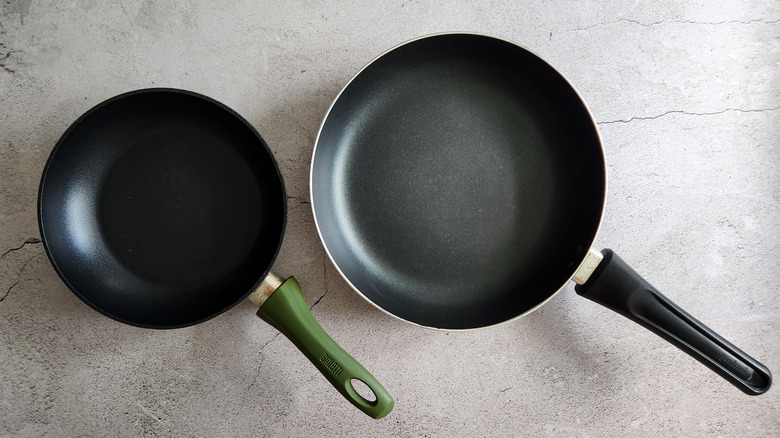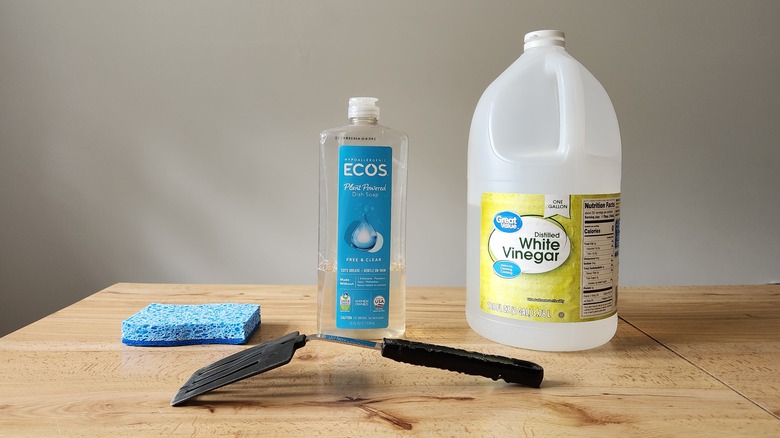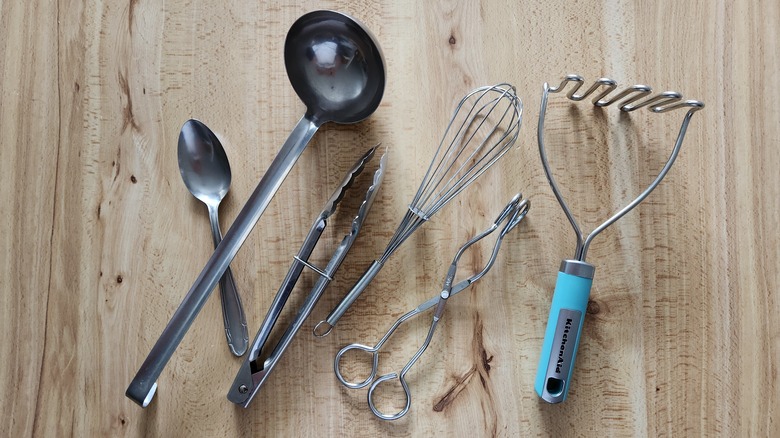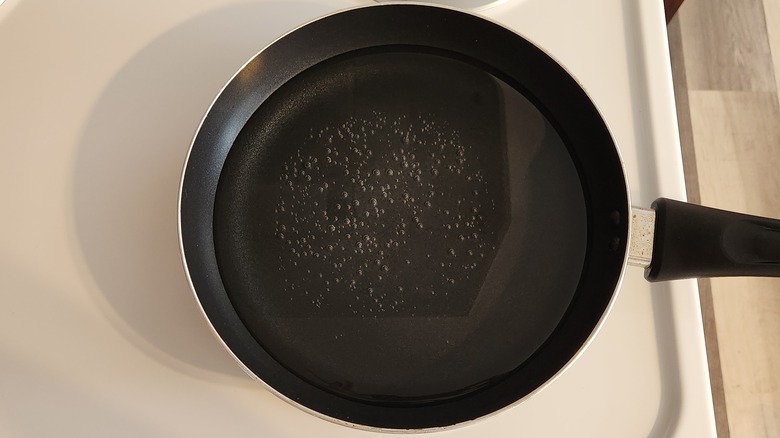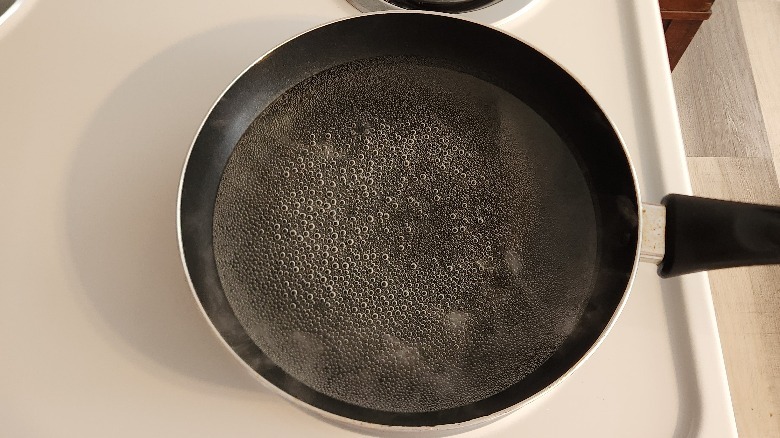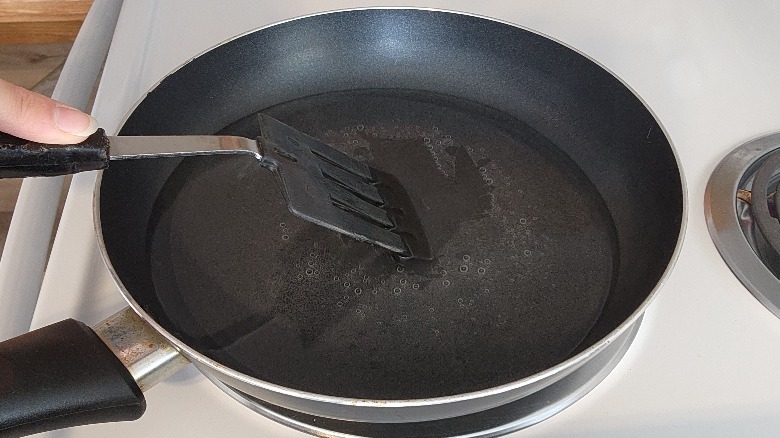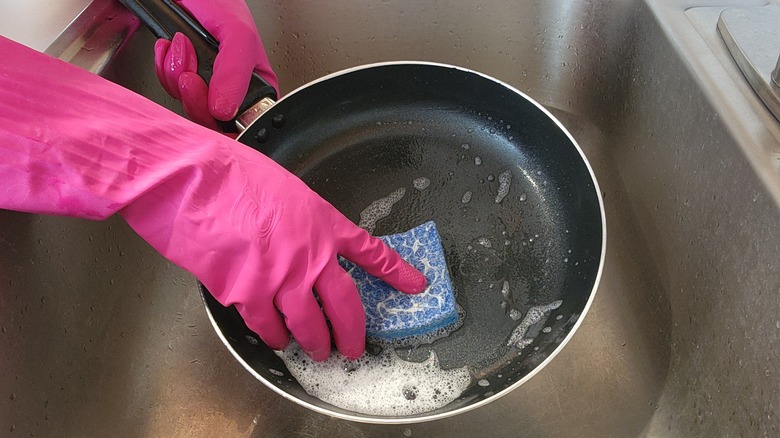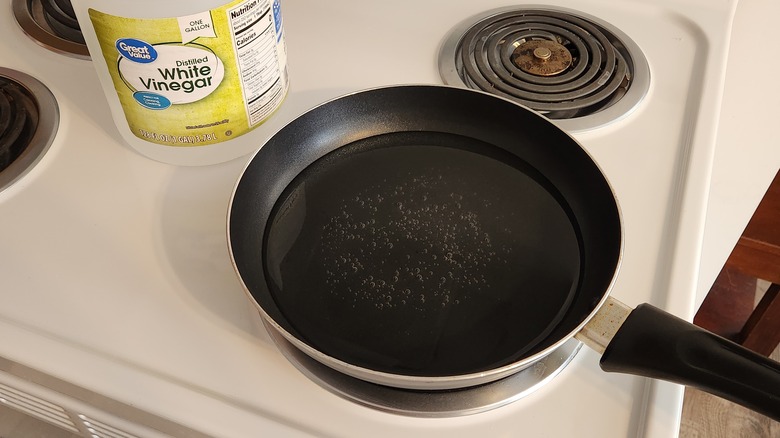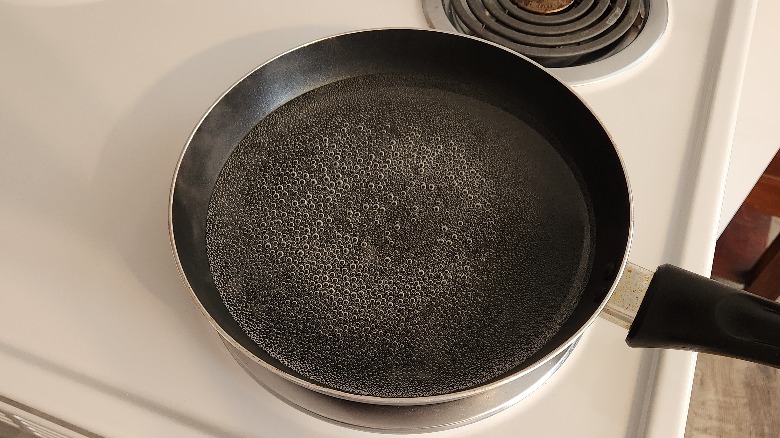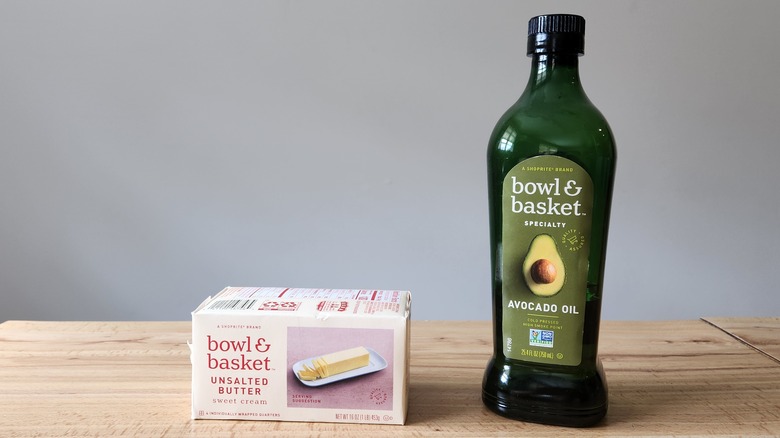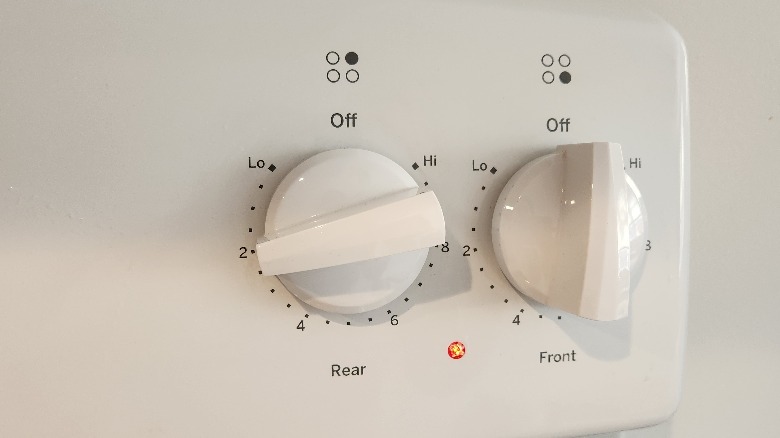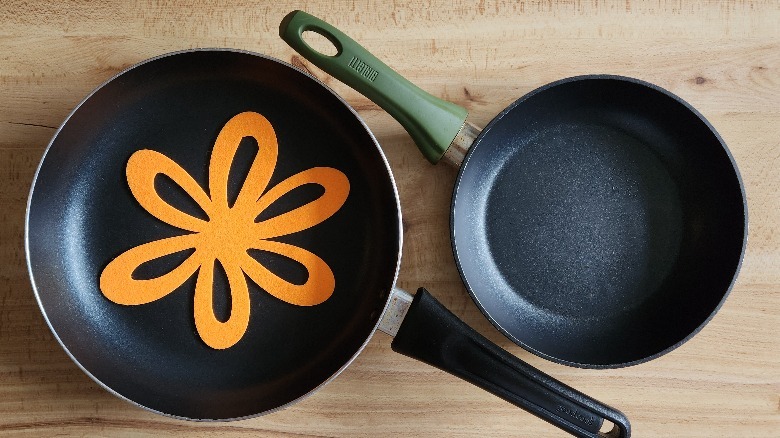How To Clean And Care For Your Non-Stick Pan
We may receive a commission on purchases made from links.
Non-stick pans came about by accident, just like the invention of other widely used products like Post-it notes and Silly Putty. The same goes for penicillin, the microwave oven, and chewing gum. Even beer is said to have been invented by accident. The chemical that's behind the coating on non-stick pans, polytetrafluoroethylene, or PTFE, was unintentionally invented in 1938 by a scientist in Ohio named Roy Plunkett. He was trying to produce tetrafluoroethylene gas but created an extremely slippery waxy substance instead. It was then French engineer Marc Gregoire who figured out how to bond the chemical to aluminum, which led to the sale of non-stick cookware in France in the 1950s and in the United States in the 1960s after FDA approval.
Non-stick cookware exploded in popularity as an easy and convenient way to cook foods like eggs, pancakes, and fish that are prone to stick to regular pans and make scrubbing a workout. While the safety of non-stick cookware is still mired in controversy, protecting the cookware from scratching or other damage is a widely-accepted way to prevent unnecessary exposure to the non-stick chemical coating underneath the surface.
That's why proper cleaning and care of non-stick cookware is crucial to keep it functioning optimally for years. Whether you're trying to make the perfect fried egg or you want to flip pancakes effortlessly, these tips will help you keep your pans in the best shape possible so you can keep making your favorite recipes as easily as you can.
Tools you'll need for cleaning non-stick pans
The tools for cleaning a non-stick pan are relatively simple. You will need a spatula made out of a material such as wood, silicone, or nylon that won't damage the pan. You'll also need a soft cloth or sponge and mild dish soap. White vinegar is an optional tool that can help you remove sticky residue if necessary.
What not to use
Scratching the surface of a non-stick pan is a kitchen mistake that can ruin your food. The coating on these pans often contain PFAS (per- and polyfluoroalkyl substances), toxic chemicals that have been used since the 1940s and don't break down, which is why they have the nickname forever chemicals. There has been recent press on forever chemicals in our kitchens, especially in water and packaged foods. If the pan's surface is scratched, toxins can leach into the food you're cooking. Some manufacturers are now making PFAS-free non-stick pans, like this Caraway 10.5 inch non-stick ceramic frying pan.
To avoid scratches, choose utensils carefully. This means metal is out, so avoid metal spatulas, spoons, forks, tongs, whisks, and any other utensils made out of metal. Especially avoid knives, which are sure to scratch or cut the surface. Safe alternatives include utensils made out of silicone, wood, or nylon. Either way, be gentle. Even a wooden spoon has the potential to do harm to your non-stick pan if used too aggressively.
Optional: Remove burnt food
Burnt food shouldn't be a regular occurrence when cooking with a non-stick pan, but we know it can happen. You can't use a scouring pad to scrub burnt food off a non-stick surface without scratching it, so follow these tips to remove residue safely. First, fill the pan with enough water to cover the burnt area. Some people like to add a little baking soda to the pan, but baking soda is a mildly abrasive substance and we find that water alone gets the job done.
Next, bring the water to a gentle simmer. Don't set the heat higher than medium.
After the water has been simmering gently for a few minutes, lightly rub the burnt residue with a spatula. The residue will gradually loosen and come away from the bottom of the pan.
Hand wash your non-stick pan
To protect the coating, it's important to wash non-stick pans by hand after cooking or following the steps to remove burnt food. The environment in the dishwasher, with hot water and abrasive powder detergents, is too harsh.
Wash the pan with warm water and a mild dish soap, avoiding any abrasive soaps, detergents, or cleaning powders. Use a soft cloth or sponge and avoid any abrasive scrubbers like scouring pads, steel wool, and even the abrasive back of a two-sided sponge.
Optional: How to remove sticky residue from a non-stick pan
If you've gotten a lot of use out of a non-stick pan, you may notice that a sticky residue has built up on the surface. This makes the pan feel dirty even after washing, and food may start to stick when cooking. If the non-stick coating is still intact, there's no need to get rid of the pan. Just pour one part white vinegar and two parts water into the pan in a quantity large enough to cover the sticky surface.
Bring the liquid to a gentle simmer for a few minutes and then let it cool. After that, all that's left is to hand wash the pan. This method will remove the sticky surface and restore the non-stick properties of the pan.
Care tips for non-stick pans
Taking a few precautions with your non-stick pans will keep them damage free for years. First, use the right cooking fat. Avoid using cooking sprays because many contain soy lecithin, which builds up over time and leaves a sticky, grimy residue that isn't easy to safely remove. This is the same reason cooking sprays are not recommended for air fryers. Instead, use butter or a high heat oil like canola, avocado, or light olive oil. Because the pan is non-stick, you'll find you don't need to use as much oil as you do with regular pans. A final note: Add the oil before turning on the heat. Never heat up a dry non-stick pan.
The second care tip to remember is to keep the heat on low or medium to avoid damaging non-stick pans. High heat can not only damage the coating and cause it to break down but it can cause the pan itself to warp. Warping can also occur if the pan heats up or cools down too fast, so give it time to cool down before washing it.
Finally, store non-stick pans carefully to avoid inadvertently scratching the surface. You can get away with stacking stainless steel and cast iron pans, but don't stack non-stick pans unless you place a protective layer between each pan. This could be something soft like a dish towel or washcloth, a smooth barrier like a paper plate, or dedicated pot and pan protectors that come in different sizes to protect the surfaces and save space in your cabinets. Be sure that your stored pans aren't touching metal objects or anything sharp that might be stored nearby in the cabinet.
